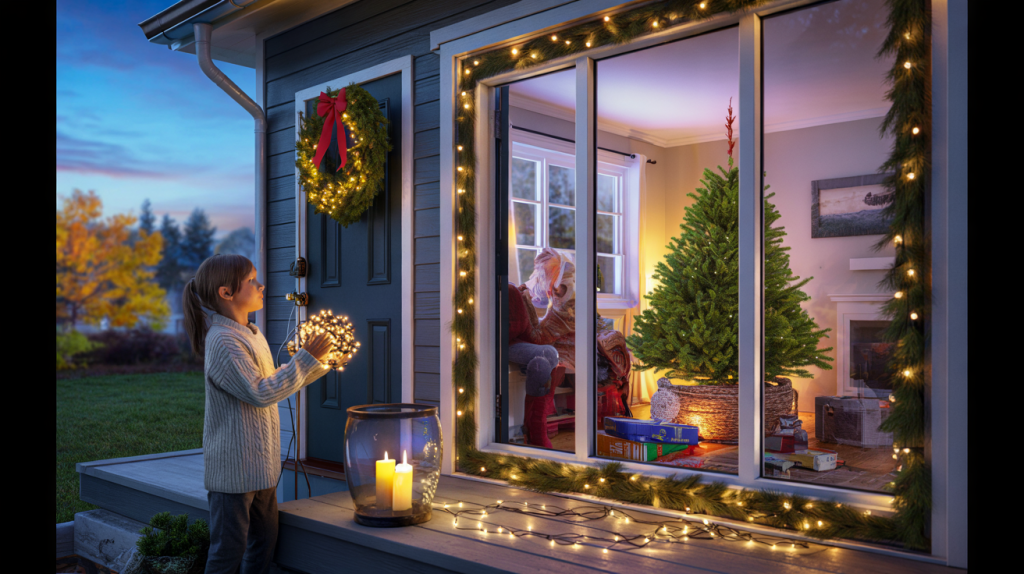Is It Too Early to Decorate for Christmas? The Real World Context
The urge arrives with the first chilly night and a box of lights within reach. Search interest rises in early November, retailers switch playlists, neighbors test their strings. The question hits hard and fast: is it too early to decorate for Christmas.
Behavior has already moved earlier. The National Retail Federation reported that 43% of holiday shoppers planned to start before November in 2023, a record for its survey, and 61% had started by early November that year according to its November 2, 2023 update. Traditions still matter as well. Advent begins on December 1 in 2024, a date many homes have used as a symbolic green light.
What People Actually Do, and Why the Date Has Shifted
Retail calendars and social feeds have nudged decorating forward, yet many households keep a mental line at Thanksgiving week. The overlap is not new. It has just been more visible as shopping and decorating have merged into one long moment.
The practical friction is simple. Start early and the mood lasts longer, start late and freshness and safety improve. Real trees set the pace, and so do energy bills and candles. The answer has not been one size fits all.
So, is it too early. Not always. For lights and artificial decor, early to mid November already fits how people live. For real trees, the first week of December remains the safer, longer lasting window.
When to Put Up the Tree and Lights: a Simple Data Backed Timeline
Freshness, tradition and cost all point to a clear sequence that avoids waste and keeps the glow.
- Outdoor LED lights and wreaths: early to mid November. LEDs cut energy use by at least 75% and last up to 25 times longer than incandescent, says the U.S. Department of Energy.
- Indoor non tree decor and garlands: the weekend after Thanksgiving. This respects a common cultural cue while extending the season.
- Real Christmas tree: first week of December. The National Christmas Tree Association notes that a well cared for cut tree typically lasts four to six weeks indoors.
- Artificial tree: any time from early November if storage space and dust are managed. Longevity is not a constraint here.
- Tradition first: if following Advent, the start date in 2024 is December 1.
Safety and Energy Facts That Should Shape the Calendar
Decoration fires spike in the heart of the season. The National Fire Protection Association reported an annual average of 790 home structure fires that began with decorations, excluding Christmas trees, for 2015 to 2019. Candles played a major role. The top three days for home candle fires are Christmas Day, New Year’s Day and New Year’s Eve.
Spacing decorations around safe habits reduces risk. Candles stay at least 30 centimeters from anything that can burn, cords stay uncrushed and indoor rated products remain indoors. Simple checks, short sessions and one circuit at a time prevent overloads that have caused too many small but costly incidents.
Energy is the quiet cost that builds. The U.S. Department of Energy states LED holiday lights use at least 75% less electricity than old incandescent strings and last up to 25 times longer. Swapping ten incandescent strands for LEDs has cut winter bills measurably in utility run pilots, and it keeps the budget flexible for December gifting.
Your Best Window to Start Decorating, Backed by Data
If the goal is a longer season with minimal risk and waste, lights and durable decor can go up in early November without a problem. The retail calendar has already moved, and LEDs have lowered the cost of an earlier glow.
For a real tree, freshness sets a natural line in the sand. Aiming for the first week of December fits the typical four to six week lifespan reported by the National Christmas Tree Association, and it aligns with Advent when that matters at home.
Households that want one shared moment often pick the weekend after Thanksgiving. That date lands well against both the NRF shopping curve from 2023 and the safety pattern highlighted by the NFPA, because it leaves time for checks before the late December peak in candle use.
The slider then becomes personal. Families with toddlers shift fragile ornaments later, apartment dwellers pace deliveries and storage, frequent travelers keep it compact. If joy needs a head start, begin with LEDs and a wreath, then layer the rest in steps. The season feels earned, not rushed, and energy and fire risk stay under control. That is definitly the sweet spot.
Sources: National Retail Federation holiday surveys, October 5, 2023 and November 2, 2023. U.S. Department of Energy, LED Lighting guidance. National Fire Protection Association, Home decoration fires 2015 to 2019. National Christmas Tree Association, Tree care and longevity.
